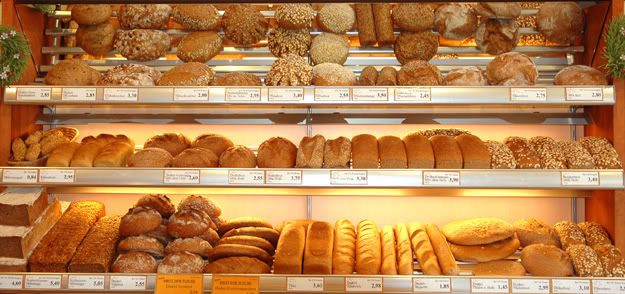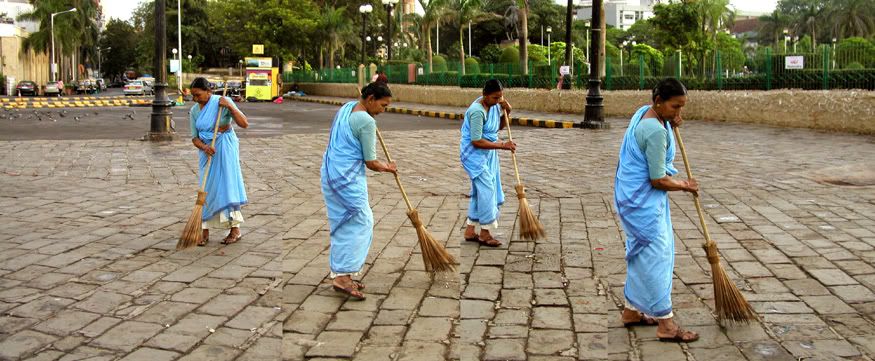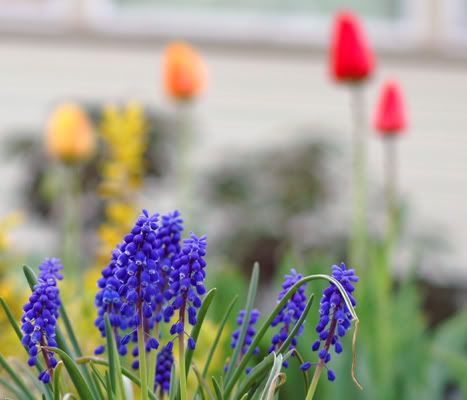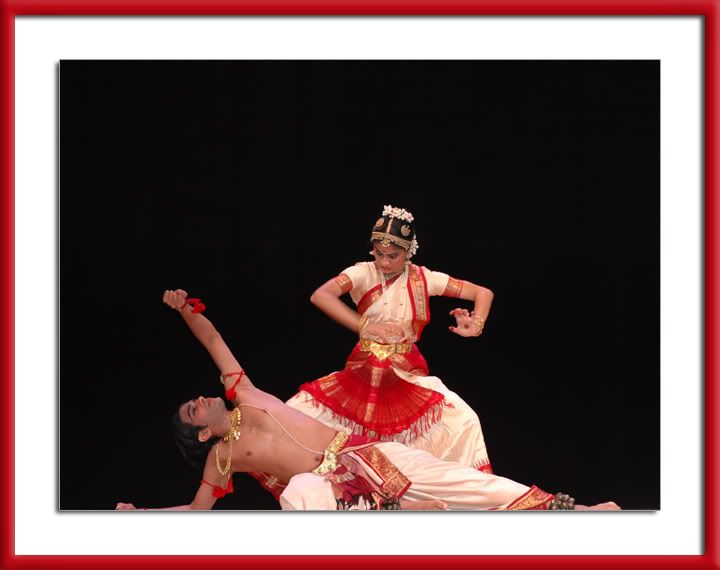Thank you for visiting.
I now have a permanent home on the Web at:
arunshanbhag.com
Stop by and browse the more than 300 articles.
Best Wishes
Arun
Tuesday, August 28, 2007
Tuesday, September 19, 2006
Bakery in Vienna, Austria
From our Swiss and Austria trip earlier in the Summer.

A display of breads in a tiny bakery in Vienna - steps from our friend's house. The bakery carried a variety of multi-grain breads and everything was "organic." The front counter displayed an assortment of dessert rolls, croissants, tarts, pastries and other savories. We'd nibble on an almond- or walnut-filled croissant and sip their superlative melange (espresso with hot milk!). Soon this became a routine. Whats not to love!

A display of breads in a tiny bakery in Vienna - steps from our friend's house. The bakery carried a variety of multi-grain breads and everything was "organic." The front counter displayed an assortment of dessert rolls, croissants, tarts, pastries and other savories. We'd nibble on an almond- or walnut-filled croissant and sip their superlative melange (espresso with hot milk!). Soon this became a routine. Whats not to love!
Wednesday, July 19, 2006
Chai Time, Goa
Kamakshi Canteen, Ponda
After quickly performing the puja at the Ramnathi Devasthan, I sneak away to the canteen beside the front entrance. They make the best missal and ussal paav. As I gorge myself, I notice these two guys taking a Chai break. Both were engrossed in their own thoughts and did not speak to each other. Prolly none were needed. By their mere presence they seemed to support each other.
I loved the color of that wall and the wall calendars! Nice!

After quickly performing the puja at the Ramnathi Devasthan, I sneak away to the canteen beside the front entrance. They make the best missal and ussal paav. As I gorge myself, I notice these two guys taking a Chai break. Both were engrossed in their own thoughts and did not speak to each other. Prolly none were needed. By their mere presence they seemed to support each other.
I loved the color of that wall and the wall calendars! Nice!

Sunday, July 16, 2006
Mee Mumbaikar!
Reading the blogs, I notice a subtle tension between those who refer to themselves as Mumbaikars or Mumbaiites. With no axe to grind, I call it as I see it.
When our city was called Bombay, we were all Bombayites. We are no longer Bombay, and the colonial-sympathizers need to just get on with the program.
But what do you call a resident of Mumbai? In my post from a few weeks ago, I reluctantly used Mumbaiite, even though it did not sound right. As the word rolled over my tongue, it seemed to catch. A cultural misfit - an elitist "ite" grudgingly grafted onto a gritty "Mumbai." So incongruous, as Laxmi would have intoned. If I had known then, I would have preferred Mumbaikar.
Mumbaikar has a certain resonance, characteristically Mumbai. In hindsight its seems so obvious - a perfect match of the indispensable marathi bai and the enigmatically reserved 'do-er', kar.
The "-ite" ending on Mumbai seems elitist, particularly in this graft. A sort of pseudo-phoren lingo, best vocalized with a western drawl and a flourish of the stylishly held cigarette. Walk down the streets of Mumbai today and can you imagine that paan wallah, fruit wallah, dabbah wallah or zhaddu wallah mouthing Mumbaiite? Guess not! Mumbaiite seems the exclusive domain of the Peddar Rd-stomping, Barista sipping crowd.
Yes, Mumbaiite is exclusive, in that it excludes the likes of Ramu busing tables at the tea shop, or these laborers pulling Haath Gaadis, or these folks enjoying vada paav. It excludes all those who make the city go, be it in fits and starts! Excludes those police - men and women, picking up the 'pieces' after the 7/11 terrorist acts. It excludes that fabled, but tired, Mumbai spirit.
Mumbaikar absolutely! It is more democratic, a social leveller, inviting everyone irrespective of which school you sudied at - if at all, irrespective of your social class. Mumbai belongs equally to those who ride posh cars and flick cigarette butts out the window, as it does to the sweepers picking up the butts. Mumbaikar, invites you to this city of broad shoulders and a big heart.
Portrait of a Mumbaikar: Street sweeper at the Gateway of India (previously posted).

x-posted from Arun Shanbhag's journal.
When our city was called Bombay, we were all Bombayites. We are no longer Bombay, and the colonial-sympathizers need to just get on with the program.
But what do you call a resident of Mumbai? In my post from a few weeks ago, I reluctantly used Mumbaiite, even though it did not sound right. As the word rolled over my tongue, it seemed to catch. A cultural misfit - an elitist "ite" grudgingly grafted onto a gritty "Mumbai." So incongruous, as Laxmi would have intoned. If I had known then, I would have preferred Mumbaikar.
Mumbaikar has a certain resonance, characteristically Mumbai. In hindsight its seems so obvious - a perfect match of the indispensable marathi bai and the enigmatically reserved 'do-er', kar.
The "-ite" ending on Mumbai seems elitist, particularly in this graft. A sort of pseudo-phoren lingo, best vocalized with a western drawl and a flourish of the stylishly held cigarette. Walk down the streets of Mumbai today and can you imagine that paan wallah, fruit wallah, dabbah wallah or zhaddu wallah mouthing Mumbaiite? Guess not! Mumbaiite seems the exclusive domain of the Peddar Rd-stomping, Barista sipping crowd.
Yes, Mumbaiite is exclusive, in that it excludes the likes of Ramu busing tables at the tea shop, or these laborers pulling Haath Gaadis, or these folks enjoying vada paav. It excludes all those who make the city go, be it in fits and starts! Excludes those police - men and women, picking up the 'pieces' after the 7/11 terrorist acts. It excludes that fabled, but tired, Mumbai spirit.
Mumbaikar absolutely! It is more democratic, a social leveller, inviting everyone irrespective of which school you sudied at - if at all, irrespective of your social class. Mumbai belongs equally to those who ride posh cars and flick cigarette butts out the window, as it does to the sweepers picking up the butts. Mumbaikar, invites you to this city of broad shoulders and a big heart.
Portrait of a Mumbaikar: Street sweeper at the Gateway of India (previously posted).

x-posted from Arun Shanbhag's journal.
Sunday, April 30, 2006
Spring Flowers: Hyacinths and Tulips

These tiny grape hyacinths are the most abundant in my yard, and pop up in every nook and cranny. With blooms only a couple of inches tall, they get overlooked amongst the brilliantly proud tulips. Also because they are so tiny, they pose a particular challenge to photograph. I planned this composition for weeks, even before the tulips had started to bud, and crossed my fingers that by the time the tulips bloomed, the hyacinths would still be around.
On thursday as I walked home, the diffuse light of the setting sun wrapped this patch in a magical glow. I had to press my cheek to the pavement to have the tulips in the frame. Out-of focus, the tulips don't steal the show. Lest they throw tantrums, I got a few pics of them too. Enjoy!
2. Daffodils, hyacinths and a glowing bush provide the backdrop

3. Duet on a spring evening!

Mirrored from my primary blog:
http://arunshanbhag.livejournal.com
Wednesday, December 07, 2005
Bharatnatyam: Rohitha Eswer & Rashmi Srinivasan

Rashmi Srinivasan and Rohitha Eswer during a bharatnatyam performance of Dashavatara, - ten avatars, or earthly forms of Vishnu. Here Rashmi is acting out Narasimha the man lion killing Hiranyakashipu. A beautiful performance by the talented husband and wife team from the Raasavrunda School of Dance, Mysore, Karnataka.
The choreography was exquisite. The first three avatars representing the fish, tortoise and the boar were superbly performed, considering the dancers had to represent water with their movements. Pleasantly, Rashmi played most of the Vishnu avataars, while Rohitha provided the supporting role: water for eg in the fish avatar and Ravana in the Rama avatar. The score for this piece was MS Subbulakshmi's Dashavatara recitation - which added to the joy of this performance. We both enjoyed and felt fortunate to see such talented artists. And support the indian arts!
The pair, dashing around stage!

I forget what piece this is from, but I love the pose!

Sunday, December 04, 2005
Konkani Delicacy: Kadgi Tzakko
As in previous years, M got to make the delicious Kadgi Tzakko. for Boston's Konkani Diwali gathering last weekend. M excels at it, and is one of my favorites.

Kadgi (a variant of the jackfruit), is a small round-ish fruit with a bumpy thick skin. Much like the jackfruit, but not spiky. The meat inside is white, the seeds and rest are all edible. Tzakko, is a typical coconut-based 'sukka' (dry) masala. The spices are delicate and don't cover-up the kadgi taste. Its gritty and fibery texture goes well with the basic rice and dhal. I like it with chapattis. Important to get the deep red color of the tzakko. Keeping kadgi tzakko in mind, during our recent visit to Kumta, we picked up a bag of "baedgi mirsang" red peppers - known for their bright color and delicate spice.
Making Kadgi Tzakko
Ingredients & Procedure:
1. 3 cans of kadgi (will feed an average family of four; or 1 hungry guy and his wife!)
2. Freshly roast 15 red chillies (M uses 10 baedgi mirsang for their color and 5 of the garden variety spicy red peppers from here)
3. Separately, roast 1 tsp coriander seeds + ¼ tsp methi seeds
4. Blend: ½ cup grated coconut, roasted chillies, coriander and methi seeds. Add ½ tsp tamarind (not pulp) and ½ tsp jaggery/gur
5. Boil kadgi pieces separately and drain. Cut wedges in smaller pieces, if you prefer
6. Blend other ingredients finely.
7. (For PhaNNa/Tadka) Heat 1 tsp oil, throw in 1 tsp mustard seed. As it starts to sputter, add about 10 kari patta (curry leaves). Take off the heat and mix with the blended masala.
8. Heat the blended masala on a low flame till it starts to simmer. Add salt to taste and kadgi pieces.
9. Mix well, taking care not to damage the kadgi pieces.
10. Heat till the water has evaporated, leaving a ‘sukka’ (dry) masala.
11. Leave aside for about 15 minutes for the spices to “soak in.” In the meantime, help clean the dishes!
12. It is considered polite to serve your guests first, and then serve yourself, one serving at a time!
Baedgi mirsang for sale at a market store in Kumta


Kadgi (a variant of the jackfruit), is a small round-ish fruit with a bumpy thick skin. Much like the jackfruit, but not spiky. The meat inside is white, the seeds and rest are all edible. Tzakko, is a typical coconut-based 'sukka' (dry) masala. The spices are delicate and don't cover-up the kadgi taste. Its gritty and fibery texture goes well with the basic rice and dhal. I like it with chapattis. Important to get the deep red color of the tzakko. Keeping kadgi tzakko in mind, during our recent visit to Kumta, we picked up a bag of "baedgi mirsang" red peppers - known for their bright color and delicate spice.
Making Kadgi Tzakko
Ingredients & Procedure:
1. 3 cans of kadgi (will feed an average family of four; or 1 hungry guy and his wife!)
2. Freshly roast 15 red chillies (M uses 10 baedgi mirsang for their color and 5 of the garden variety spicy red peppers from here)
3. Separately, roast 1 tsp coriander seeds + ¼ tsp methi seeds
4. Blend: ½ cup grated coconut, roasted chillies, coriander and methi seeds. Add ½ tsp tamarind (not pulp) and ½ tsp jaggery/gur
5. Boil kadgi pieces separately and drain. Cut wedges in smaller pieces, if you prefer
6. Blend other ingredients finely.
7. (For PhaNNa/Tadka) Heat 1 tsp oil, throw in 1 tsp mustard seed. As it starts to sputter, add about 10 kari patta (curry leaves). Take off the heat and mix with the blended masala.
8. Heat the blended masala on a low flame till it starts to simmer. Add salt to taste and kadgi pieces.
9. Mix well, taking care not to damage the kadgi pieces.
10. Heat till the water has evaporated, leaving a ‘sukka’ (dry) masala.
11. Leave aside for about 15 minutes for the spices to “soak in.” In the meantime, help clean the dishes!
12. It is considered polite to serve your guests first, and then serve yourself, one serving at a time!
Baedgi mirsang for sale at a market store in Kumta

Subscribe to:
Posts (Atom)